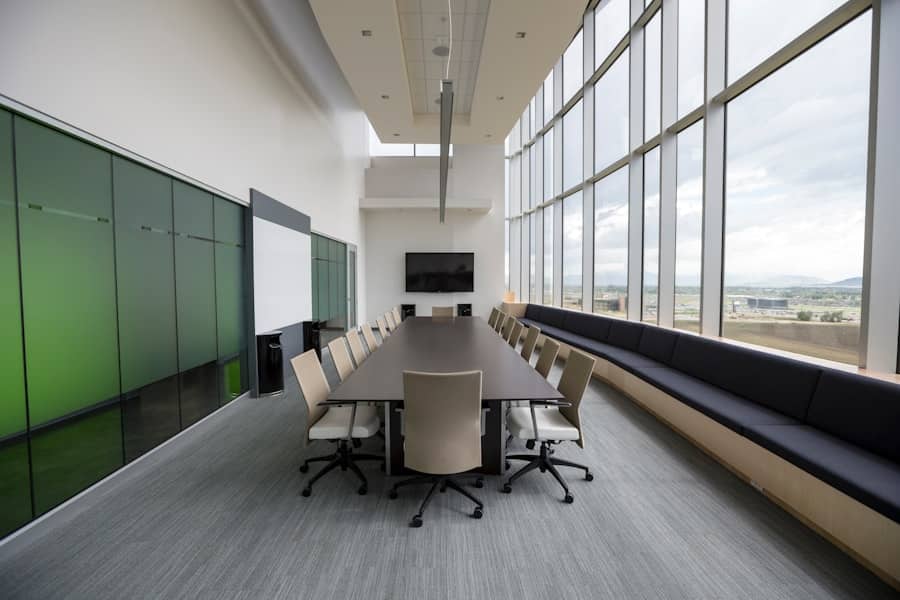Augmented Reality (AR) has emerged as a transformative technology in the retail sector, reshaping how consumers interact with brands and products. By overlaying digital information onto the physical world, AR creates immersive experiences that enhance customer engagement and personalization. This technology allows retailers to bridge the gap between online and offline shopping, offering tailored experiences that cater to individual preferences and needs.
As consumers increasingly seek unique and interactive shopping experiences, AR stands out as a powerful tool for retailers aiming to differentiate themselves in a competitive market. The integration of AR into retail is not merely a trend; it represents a fundamental shift in how businesses approach customer interactions. Retailers are leveraging AR to provide personalized recommendations, virtual try-ons, and interactive product displays, all of which contribute to a more engaging shopping journey.
This personalization is crucial in an era where consumers are bombarded with choices and information. By utilizing AR, retailers can create memorable experiences that resonate with customers on a deeper level, fostering brand loyalty and driving sales.
Key Takeaways
- AR technology is revolutionizing the way retailers personalize customer experiences by integrating digital elements into the physical shopping environment.
- AR is playing a crucial role in shaping the future of retail by enhancing customer engagement and providing immersive shopping experiences.
- The use of AR in retail is revolutionizing the customer shopping experience by allowing customers to visualize products in real-time and make more informed purchasing decisions.
- Personalized AR retail experiences benefit customers by providing tailored product recommendations, interactive shopping experiences, and virtual try-on options.
- AR has a significant impact on customer engagement and loyalty by creating memorable and interactive experiences that drive repeat business and brand advocacy.
The Role of AR in Shaping the Future of Retail
As the retail landscape continues to evolve, AR is playing a pivotal role in shaping its future. The technology enables retailers to create dynamic environments where customers can visualize products in their own spaces before making a purchase. For instance, furniture retailers like IKEA have developed AR applications that allow customers to see how a piece of furniture would look in their home, complete with accurate dimensions and design elements.
This capability not only enhances the shopping experience but also reduces the likelihood of returns, as customers can make more informed decisions. Moreover, AR is facilitating a shift towards omnichannel retailing, where online and offline experiences are seamlessly integrated. Retailers are using AR to enhance physical store visits by providing interactive displays and information that enrich the shopping experience.
For example, cosmetics brands have introduced AR mirrors that allow customers to virtually try on makeup products before purchasing. This not only engages customers but also encourages them to explore additional products, ultimately increasing sales. As AR technology continues to advance, its role in creating cohesive and personalized retail experiences will only grow stronger.
How AR is Revolutionizing the Customer Shopping Experience
The customer shopping experience is undergoing a revolution thanks to AR technology. Traditional shopping methods often involve uncertainty and hesitation, particularly when it comes to visualizing how products will fit into one’s lifestyle. AR addresses this challenge by providing customers with interactive tools that enhance their decision-making process.
For example, clothing retailers are utilizing AR applications that allow customers to see how garments will look on them without the need for physical try-ons. This not only saves time but also adds an element of fun to the shopping experience. In addition to virtual try-ons, AR is enhancing product discovery through gamification and interactive storytelling.
Retailers are creating engaging narratives around their products that encourage exploration and interaction. For instance, brands can develop AR scavenger hunts within their stores or through mobile apps, where customers can unlock discounts or learn more about product features by engaging with digital content. This innovative approach not only captivates customers but also fosters a sense of community and connection with the brand.
The Benefits of Personalized AR Retail Experiences for Customers
Personalized AR retail experiences offer numerous benefits for customers, significantly enhancing their overall shopping journey. One of the most notable advantages is the ability to receive tailored recommendations based on individual preferences and behaviors. By analyzing customer data, retailers can use AR to present personalized product suggestions that align with a shopper’s style or needs.
For example, a customer browsing for athletic wear might receive AR prompts showcasing complementary items such as shoes or accessories, creating a cohesive shopping experience. Furthermore, personalized AR experiences can lead to increased customer satisfaction and confidence in purchasing decisions. When customers can visualize how products will fit into their lives—whether it’s seeing how a piece of art looks on their wall or trying on clothes virtually—they are more likely to feel satisfied with their choices.
This confidence reduces buyer’s remorse and enhances the likelihood of repeat purchases. Additionally, personalized interactions foster emotional connections between customers and brands, as shoppers feel understood and valued.
The Impact of AR on Customer Engagement and Loyalty
AR has a profound impact on customer engagement and loyalty by creating memorable experiences that resonate with consumers. Engaging customers through interactive content not only captures their attention but also encourages them to spend more time exploring products and services. Retailers that implement AR effectively can create immersive environments that draw customers in, leading to increased dwell time and higher conversion rates.
For instance, brands like Sephora have successfully integrated AR into their marketing strategies by allowing customers to experiment with different makeup looks through their mobile app. Moreover, the novelty of AR experiences can enhance brand loyalty by making shopping enjoyable and exciting. When customers have positive interactions with a brand’s AR offerings, they are more likely to return for future purchases and recommend the brand to others.
This word-of-mouth marketing is invaluable in today’s digital age, where consumers often rely on peer recommendations before making buying decisions. By consistently delivering engaging AR experiences, retailers can cultivate a loyal customer base that feels connected to the brand.
The Challenges and Opportunities of Implementing AR in Retail
While the potential of AR in retail is immense, there are several challenges that retailers must navigate when implementing this technology. One significant hurdle is the cost associated with developing and maintaining AR applications. Creating high-quality AR experiences requires investment in technology, software development, and ongoing updates to ensure compatibility with new devices and platforms.
Smaller retailers may find it particularly challenging to allocate resources for such initiatives, potentially limiting their ability to compete with larger brands. Despite these challenges, there are numerous opportunities for retailers willing to embrace AR technology. As consumer expectations evolve, businesses that adopt innovative solutions stand to gain a competitive edge.
Collaborations with tech companies specializing in AR development can help retailers overcome resource constraints while accessing cutting-edge technology. Additionally, as AR becomes more mainstream, consumer familiarity with the technology will likely increase, making it easier for retailers to implement effective strategies that resonate with their target audience.
The Future Trends and Innovations in AR for Personalizing Customer Retail Experiences
The future of AR in retail is poised for exciting developments as technology continues to advance. One emerging trend is the integration of artificial intelligence (AI) with AR applications to create even more personalized experiences. AI algorithms can analyze customer behavior and preferences in real-time, allowing retailers to deliver hyper-targeted content through AR interfaces.
For instance, an AI-powered AR app could suggest outfits based on a customer’s previous purchases or browsing history, enhancing the personalization factor significantly. Another trend is the rise of social commerce through AR platforms. As social media continues to play a crucial role in consumer purchasing decisions, retailers are exploring ways to incorporate AR into social media channels.
This seamless integration of social media and AR not only enhances customer engagement but also streamlines the purchasing process.
The Potential of AR in Transforming the Future of Retail
The potential of augmented reality in transforming the retail landscape is vast and multifaceted. As consumers increasingly seek personalized experiences that cater to their individual preferences, retailers must adapt by leveraging innovative technologies like AR. From enhancing product visualization to creating engaging narratives around brands, AR offers numerous avenues for improving customer interactions and driving sales.
As we look ahead, it is clear that the integration of AR into retail will continue to evolve alongside technological advancements and changing consumer behaviors. Retailers who embrace this transformation will not only enhance their competitive edge but also foster deeper connections with their customers—ultimately redefining what it means to shop in the modern age. The journey toward fully realizing the potential of augmented reality in retail is just beginning, promising an exciting future for both businesses and consumers alike.
In a recent article discussing the future of AR in personalizing customer retail experiences, it was highlighted how smartwatches are enhancing connectivity in the retail industry. Smartwatches have become an integral part of the customer shopping experience, allowing for seamless interactions and personalized recommendations. To learn more about the best tablets with SIM card slots and how they can further enhance customer experiences, check out this article.
FAQs
What is AR (Augmented Reality) and how does it work in retail?
AR (Augmented Reality) is a technology that overlays digital information such as images, videos, or 3D models onto the real world. In retail, AR can be used to provide customers with personalized experiences by allowing them to visualize products in their own environment before making a purchase.
How does AR personalize customer retail experiences?
AR personalizes customer retail experiences by allowing customers to virtually try on products, visualize how products will look in their own space, and receive personalized product recommendations based on their preferences and past purchase history.
What are the benefits of using AR in retail for personalizing customer experiences?
The benefits of using AR in retail for personalizing customer experiences include increased customer engagement, higher conversion rates, reduced product returns, and the ability to gather valuable data on customer preferences and behavior.
What are some examples of AR being used in retail to personalize customer experiences?
Some examples of AR being used in retail to personalize customer experiences include virtual try-on for clothing and accessories, virtual home decor visualization, and personalized product recommendations based on customer preferences and past purchase history.
What is the future outlook for AR in personalizing customer retail experiences?
The future outlook for AR in personalizing customer retail experiences is promising, with continued advancements in AR technology and its integration into the retail industry. As AR becomes more accessible and seamless, it is expected to play a significant role in shaping the future of retail by providing highly personalized and immersive customer experiences.



